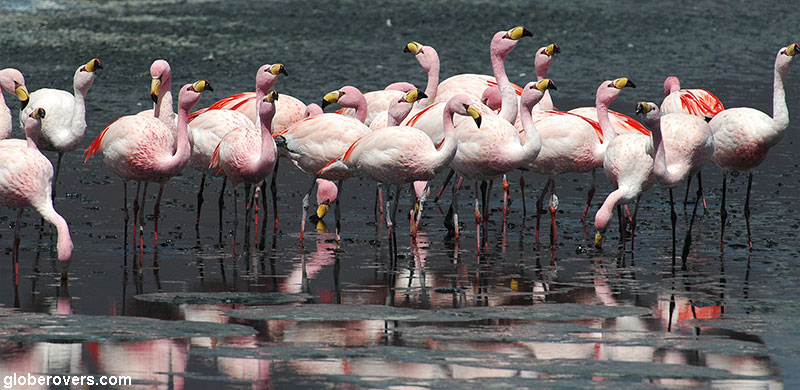
A highlight of South America’s Altiplano Plateau in southern Bolivia, is the flamingos. The James’s (or Puna) flamingo, Chilean flamingo, and the Andean flamingo.
Keep an eye out for the Andean flamingo with its pale pink body with brighter upper parts. Living exclusively around South America’s Andes mountains, it is one of the rarest flamingos in the world. Its bill is black and pale yellow with yellow legs.
The Andean and James’s flamingos are the only flamingo species that have three-toed feet without a hallux, or hind toe.
For a long time the James’s flamingo was presumed extinct. However, in 1909 a nesting colony was discovered at Laguna Colorada. The flamingos of the Altiplano sure know how to elude predators. Non-flying predators would have to defy the seemingly bottomless saline mud to get to an egg or a tasty chick while flying predators would face very thin air and the intense and relentless winds. True survivors!
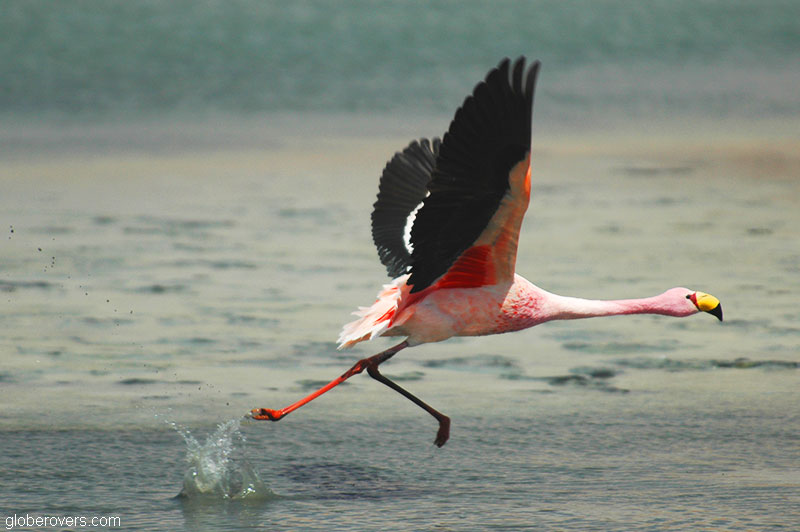
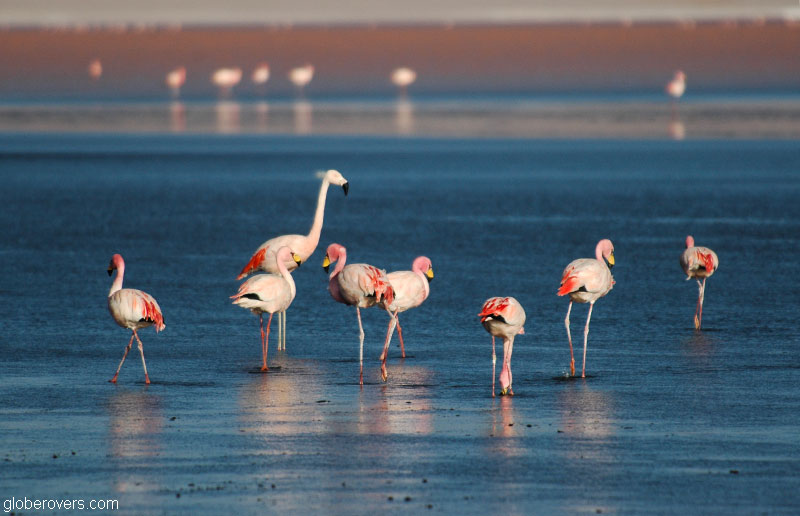
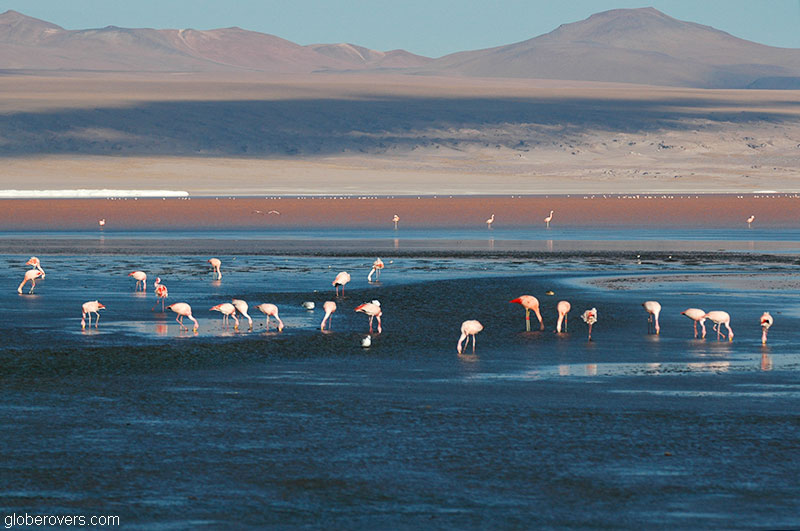
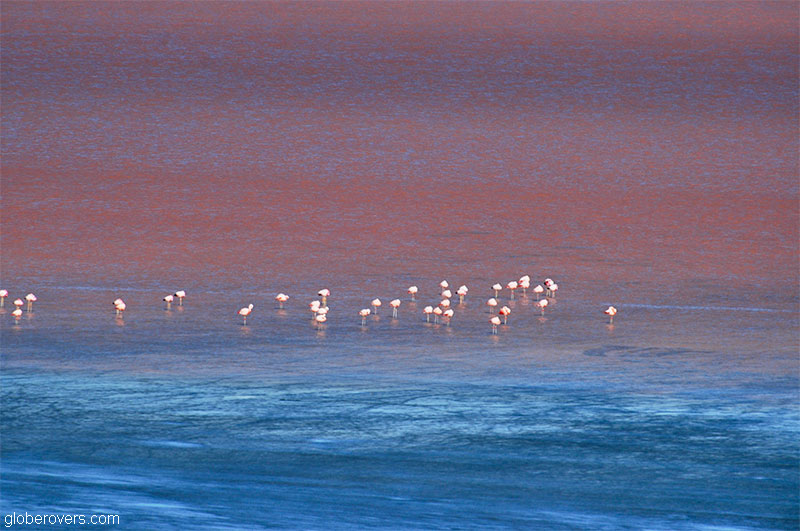
Early November is breeding time for the flamingos and they come in large numbers to feed on the pinkish coloured algae.
They have likely never been hunted so most don’t seem to care much about human presence.
It’s truly an incredible sight to see hundreds of flamingos grazing in the shallow lakes. The only thing more beautiful, is when they en masse take to flight right in front of your very eyes. Most of the lakes at some point have a flock of flamingos present. However, some lakes seem to be more popular, such as Laguna Hedionda, Laguna Cañapa, Laguna Colorada and Laguna Verde, near Volcan Licancabur.
Llamas are also common in this area.
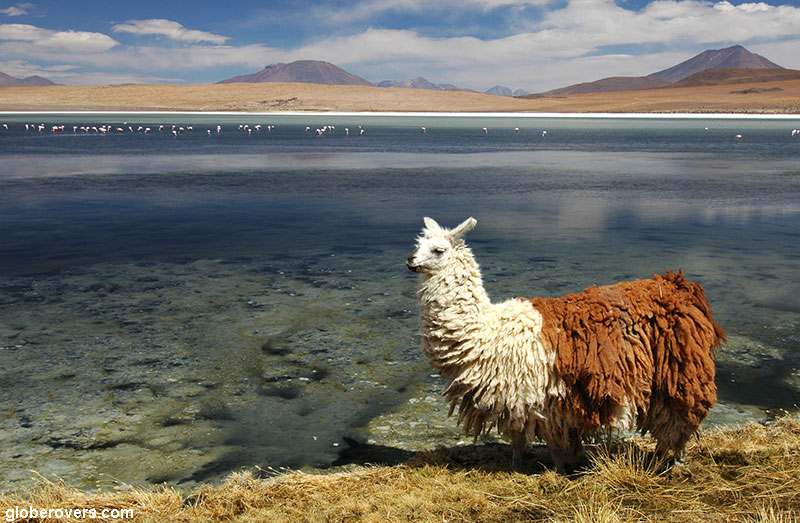
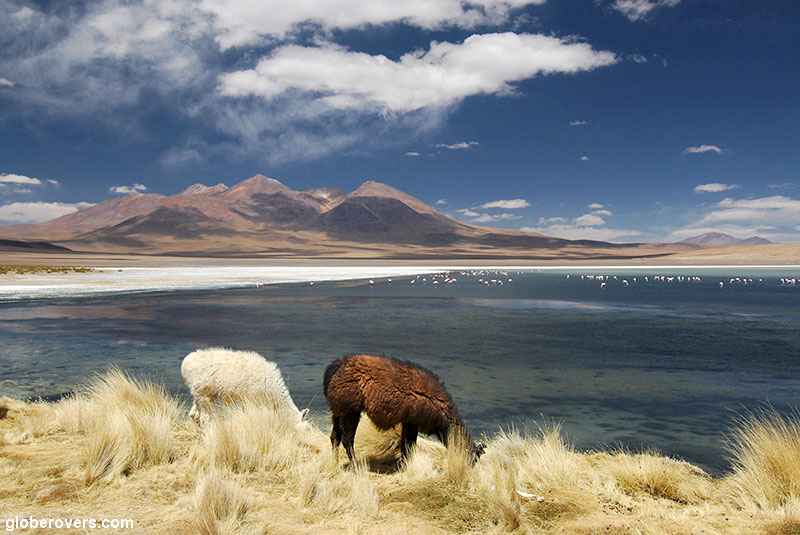
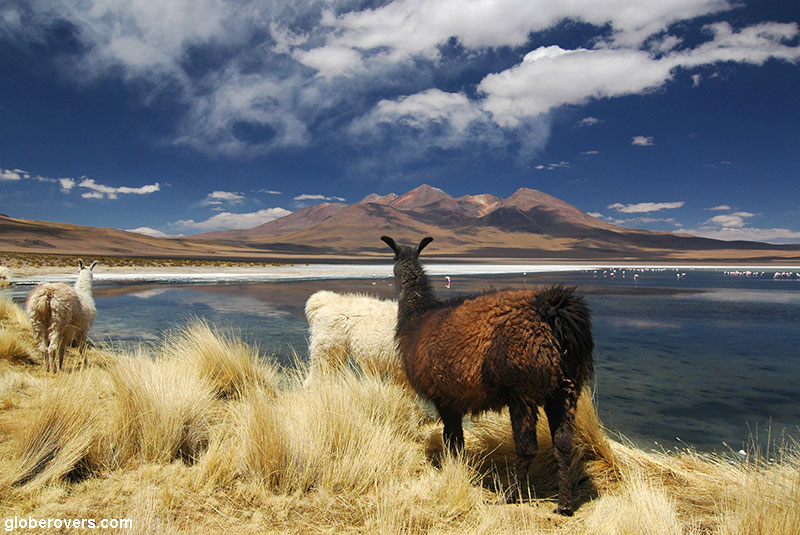
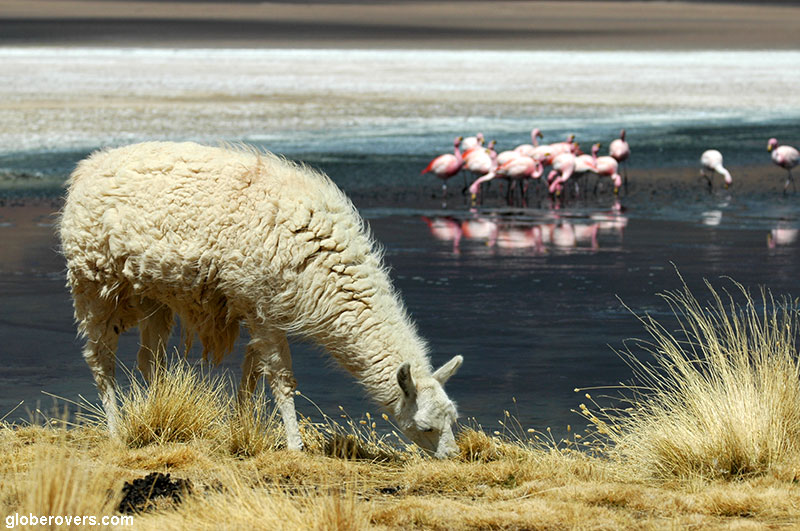
☛ Read more: Bolivia’s Rugged Salar de Uyuni
☛ Read more: 9 Sights not to miss in southern Bolivia



Blog post and photos by Peter who has been travelling almost full-time since 2005 and has been to over 122 countries. He visited several countries, such as Japan, more than 20 times. Peter is Editor-in-Chief and Publisher of GlobeRovers Magazine, an independent travel magazine focused on intrepid destinations.
